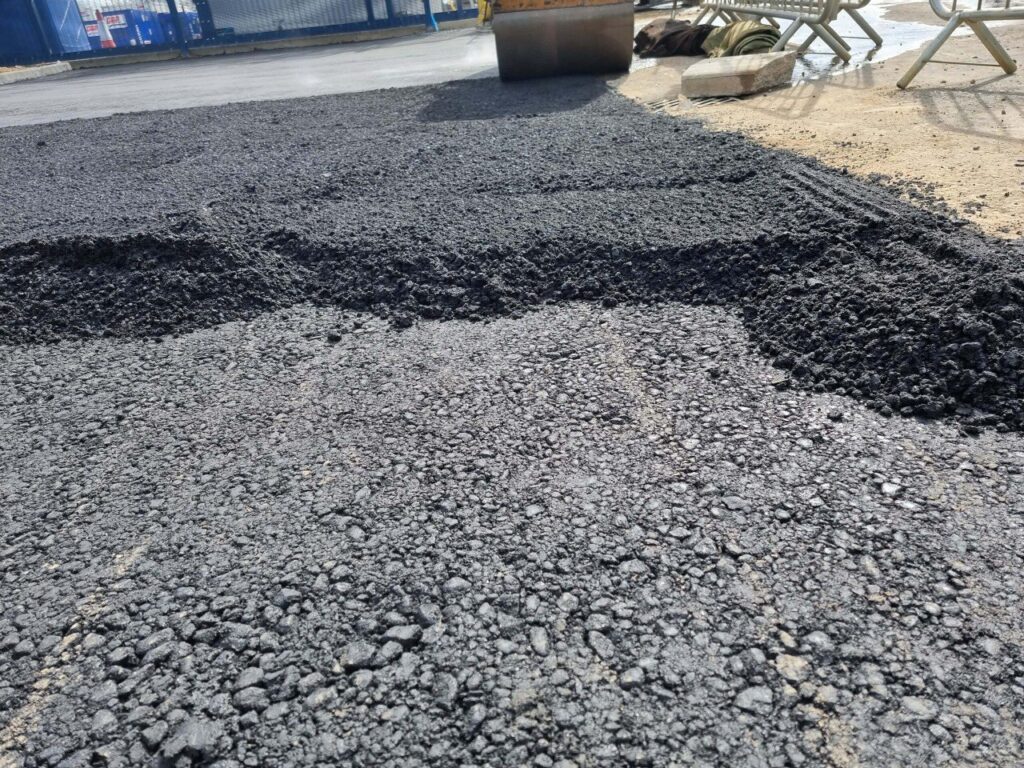Tarmac Roadways and Public Health: Impact on Air Quality and Noise Pollution
Introduction: Tarmac roadways are an integral part of our urban landscape, connecting communities and facilitating transportation. While they provide essential mobility, tarmac roadways also have a significant impact on public health, influencing air quality and noise pollution in our neighbourhoods. In this blog post, we’ll delve into how tarmac road construction and maintenance can affect the environment and, subsequently, the well-being of residents.
Air Quality Concerns:
1. Particle Emissions:
Tarmac road surfaces can generate particulate matter (PM) emissions, primarily through the wear and tear caused by vehicle traffic. These tiny airborne particles, including PM2.5 and PM10, can pose serious health risks when inhaled, contributing to respiratory issues, cardiovascular problems, and premature death.
2. Air Quality Index (AQI):
High airborne pollutants from tarmac roadways can lead to a poor Air Quality Index (AQI), indicating reduced air quality. This can result in “bad air days” when outdoor activities are discouraged to protect public health.
Mitigating Air Quality Issues:
1. Sustainable Road Construction:
Adopting sustainable road construction practices, such as using recycled materials in tarmac mixtures and minimising construction dust, can reduce the environmental impact of roadways.
2. Vegetation and Green Infrastructure:
Planting trees and creating green spaces alongside roadways can help filter and absorb air pollutants, improving local air quality.
Noise Pollution Impact:
1. Traffic Noise:
Tarmac roadways, especially in urban areas, are often associated with high traffic volumes. The noise generated by vehicles can adversely affect public health, leading to stress, sleep disturbances, and an increased risk of cardiovascular problems.
2. Quieter Road Surfaces:
Innovations in tarmac technology have led to the development of quieter road surfaces that reduce tire-road noise. These surfaces help mitigate the impact of traffic noise on nearby communities.
Minimising Noise Pollution:
1. Noise Barriers:
Installing noise barriers, such as acoustic walls and embankments, can shield residential areas from the negative effects of traffic noise.
2. Speed Limits and Traffic Management:
Implementing lower speed limits and effective traffic management strategies can reduce noise levels in urban areas.
Conclusion: Tarmac roadways are essential for modern transportation, but their impact on public health cannot be overlooked. To create healthier and more livable communities, it’s crucial to address the air quality and noise pollution issues associated with tarmac road construction and maintenance. By adopting sustainable practices, planting greenery, and employing innovative road surface technologies, we can minimise the adverse effects of tarmac roadways on public health. Balancing mobility needs with environmental and health considerations is key to creating a harmonious urban landscape that benefits us all.
Call us on: 01892 578 896
Click here to find out more about Tunbridge Wells Driveways
Click here to complete our contact form and see how we can help with your driveway needs.

